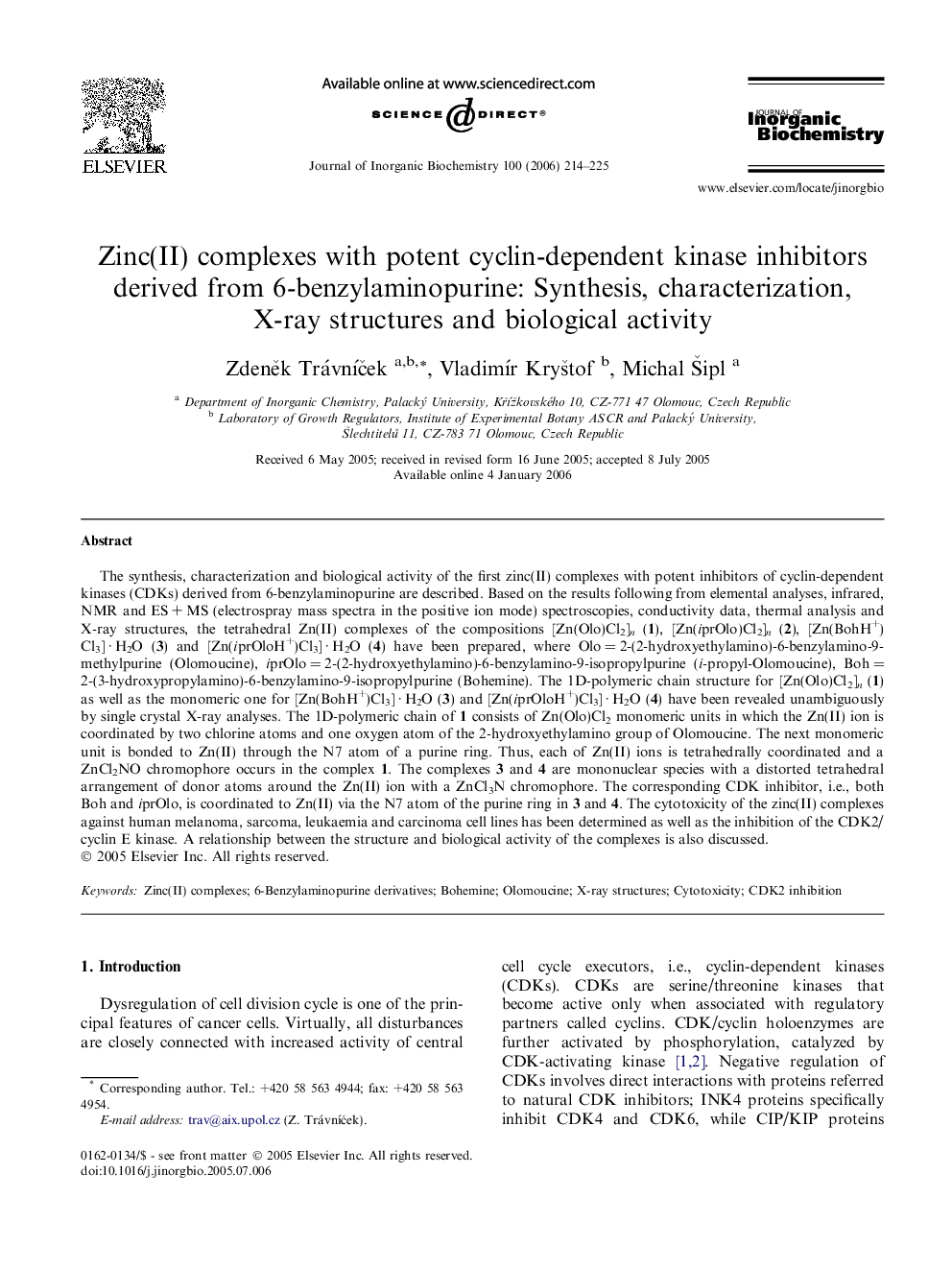| Article ID | Journal | Published Year | Pages | File Type |
|---|---|---|---|---|
| 1317329 | Journal of Inorganic Biochemistry | 2006 | 12 Pages |
The synthesis, characterization and biological activity of the first zinc(II) complexes with potent inhibitors of cyclin-dependent kinases (CDKs) derived from 6-benzylaminopurine are described. Based on the results following from elemental analyses, infrared, NMR and ES + MS (electrospray mass spectra in the positive ion mode) spectroscopies, conductivity data, thermal analysis and X-ray structures, the tetrahedral Zn(II) complexes of the compositions [Zn(Olo)Cl2]n (1), [Zn(iprOlo)Cl2]n (2), [Zn(BohH+)Cl3] · H2O (3) and [Zn(iprOloH+)Cl3] · H2O (4) have been prepared, where Olo = 2-(2-hydroxyethylamino)-6-benzylamino-9-methylpurine (Olomoucine), iprOlo = 2-(2-hydroxyethylamino)-6-benzylamino-9-isopropylpurine (i-propyl-Olomoucine), Boh = 2-(3-hydroxypropylamino)-6-benzylamino-9-isopropylpurine (Bohemine). The 1D-polymeric chain structure for [Zn(Olo)Cl2]n (1) as well as the monomeric one for [Zn(BohH+)Cl3] · H2O (3) and [Zn(iprOloH+)Cl3] · H2O (4) have been revealed unambiguously by single crystal X-ray analyses. The 1D-polymeric chain of 1 consists of Zn(Olo)Cl2 monomeric units in which the Zn(II) ion is coordinated by two chlorine atoms and one oxygen atom of the 2-hydroxyethylamino group of Olomoucine. The next monomeric unit is bonded to Zn(II) through the N7 atom of a purine ring. Thus, each of Zn(II) ions is tetrahedrally coordinated and a ZnCl2NO chromophore occurs in the complex 1. The complexes 3 and 4 are mononuclear species with a distorted tetrahedral arrangement of donor atoms around the Zn(II) ion with a ZnCl3N chromophore. The corresponding CDK inhibitor, i.e., both Boh and iprOlo, is coordinated to Zn(II) via the N7 atom of the purine ring in 3 and 4. The cytotoxicity of the zinc(II) complexes against human melanoma, sarcoma, leukaemia and carcinoma cell lines has been determined as well as the inhibition of the CDK2/cyclin E kinase. A relationship between the structure and biological activity of the complexes is also discussed.
